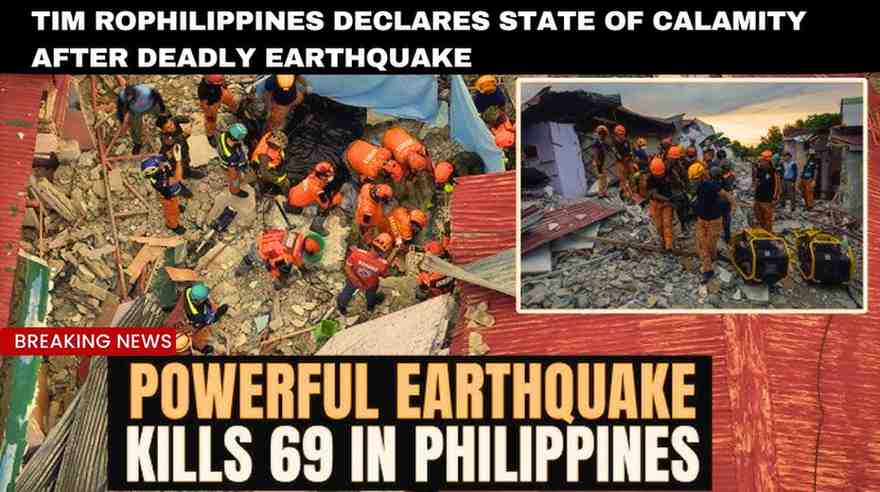Philippines Declares State of Calamity After Earthquake Kills 69 in Province

The Philippines is once again dealing with the terrible effects of natural calamities, after a massive magnitude-6.9 earthquake slammed the central province of Cebu late Tuesday night. The quake, which struck at 10 p.m., has killed at least 69 people, injured many more, and left numerous residents fearing they are trapped under collapsed structures. The government has officially declared a state of calamity, indicating the intensity of the crisis and the critical need for relief and rehabilitation efforts.
In the worst-hit places, such as Bogo City and nearby rural communities, rescuers worked feverishly through the night and into Wednesday, searching for survivors with backhoes, sniffer dogs, and heavy equipment. Entire families were reported missing, and scores of homes and buildings fell, displacing thousands. Authorities fear that the death toll will grow as recovery teams unearth debris in seriously damaged areas. Survivors recounted scenes of panic, with terrified locals fleeing into the streets as tremors rattled the ground and emergency sirens sounded across the region.
Officials said declaring a state of calamity will allow local governments to access emergency money faster, manage basic commodity prices, and streamline relief efforts for displaced communities. With power outages and communication lines down in multiple communities, the immediate priority is to rescue those who remain stranded and provide food, shelter, and medical care to the injured and destitute. Local hospitals, already overburdened by recent typhoons, have been swamped by the sudden inflow of earthquake patients.
This calamity follows a devastating tropical storm that just hit areas of the country. Renato Solidum Jr., director of the Philippine Institute of Volcanology and Seismology (Phivolcs), stated that the earthquake occurred along a recognized fault line in the seismically active Pacific "Ring of Fire," which includes the Philippines. Because of its physical susceptibility, the archipelago is one of the most disaster-prone countries in the world, experiencing not just numerous earthquakes and volcanic eruptions but also approximately 20 typhoons per year. The back-to-back disasters have left thousands of citizens frightened and concerned about their safety in the coming days.
International authorities are monitoring the situation in the Philippines, which has sparked worry worldwide. Humanitarian organizations, including the Red Cross, have deployed to help local authorities distribute emergency supplies and establish temporary shelters. The government has encouraged inhabitants of Cebu and adjacent provinces to be on the lookout for potential aftershocks, which might inflict additional damage to already fragile infrastructure.
As rescue operations continue, the tragedy highlights the critical need for enhanced disaster preparedness, stronger infrastructure, and long-term recovery planning in the Philippines. While the people's resilience is obvious, each calamity tests the country's ability to rebuild quickly and safeguard its most vulnerable communities.